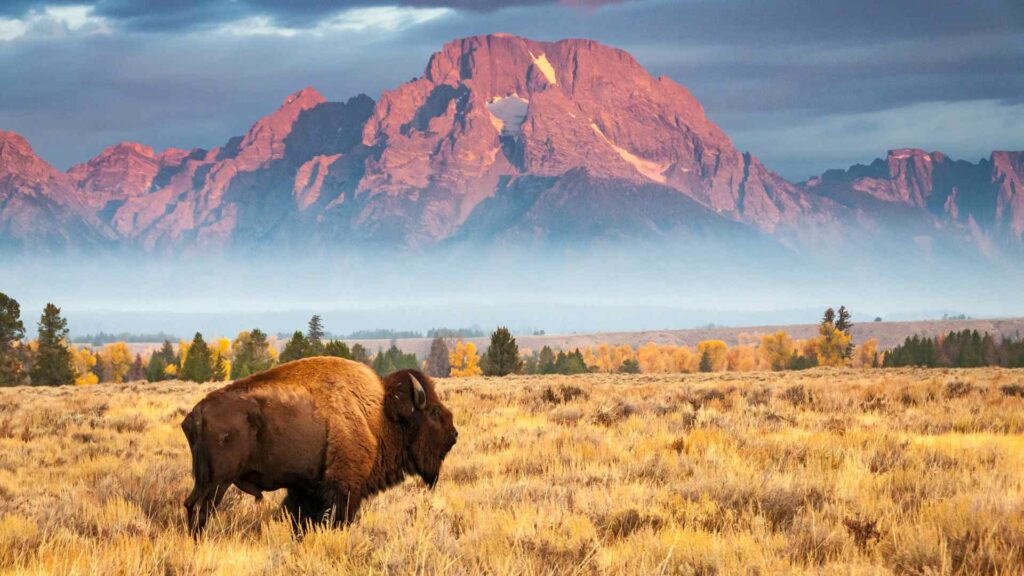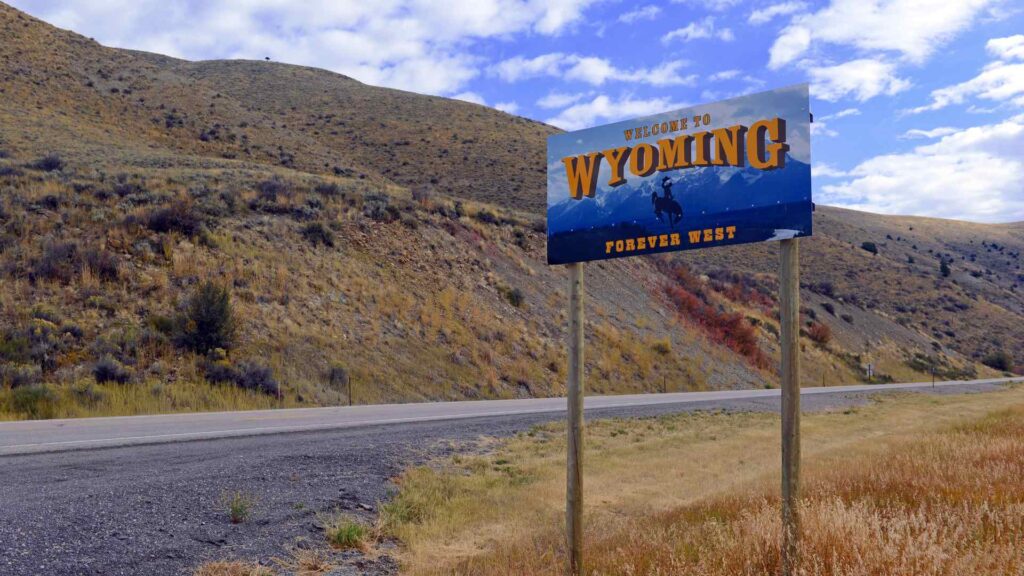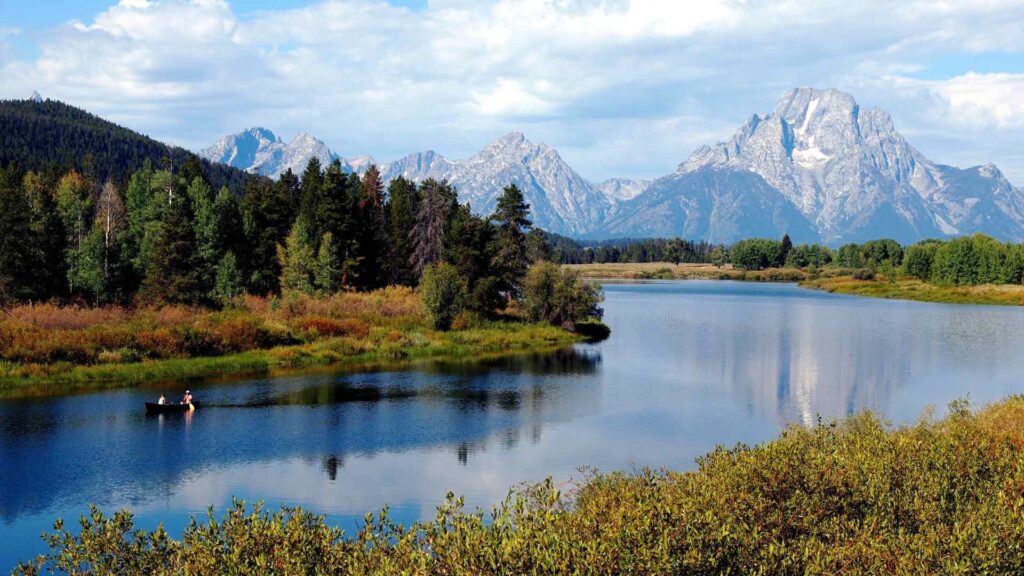Wyoming has captivated adventurers and dreamers alike for centuries.
Known for its breathtaking landscapes and pioneering history, the Cowboy State holds an abundance of intriguing nicknames.
In this ultimate guide, we’ll delve into their origins, stories, and cultural significance, illuminating why Wyoming’s monikers resonate far beyond its borders.
The Heritage of Wyoming Nicknames
Wyoming’s nicknames come from a tapestry woven by early settlers, Native tribes, and bold pioneers.
This heritage is deeply reflective of its history, landscape, and frontier spirit.
Understanding how these nicknames emerged sheds light on Wyoming’s identity and its enduring connection to the Old West.

Historical Backdrop
Long before Wyoming was recognized as a state, it served as a central crossroads for Indigenous peoples, fur trappers, and early explorers.
As travelers moved through the region along historic routes like the Oregon Trail, they encountered rugged landscapes and unpredictable weather, quickly recognizing the beauty and harshness that would define the territory.
This unfiltered frontier experience contributed to the inception of various nicknames, many of which highlighted the area’s mountain vistas, vast plains, and wild spirit.
During the 19th century, writers and journalists embellished these early monikers with their own romantic notions of the West.
Tales of gold rushes, larger-than-life cowboys, and clashes with nature all formed the narrative skeleton of Wyoming’s evolving reputation. As the nation looked westward for opportunities and expansion, Wyoming stood out for its bold, untamed character.
Influence of Early Settlers
The Homestead Act of 1862 drew pioneering families into Wyoming, seeking new beginnings and land to call their own.
Their stories, folklore, and everyday struggles became deeply ingrained in local culture. Whether it was huddling around a campfire after a day of ranch work or negotiating peace treaties with Native tribes, these families embodied the pioneering spirit.
It was in these intimate, day-to-day moments that nicknames for the region took root and began to reflect more than just the state’s rugged conditions—they began to honor the determination and resilience of the people who lived there.
Key highlights that contributed to the foundation of Wyoming’s nicknames include:
- Influence of tribes such as the Arapaho, Shoshone, and Cheyenne
- Stories carried along the Oregon, Mormon, and Bozeman Trails
- Historic expansion fueled by the Homestead Act and the Transcontinental Railroad
- Romanticized literary depictions by novelists and journalists
By blending Native heritage, pioneer resilience, and frontier dreams, Wyoming’s earliest nicknames mirror its role as a meeting place for cultures and a land of opportunity.
Today, these nicknames serve as a testament to Wyoming’s story of discovery, endurance, and unyielding spirit.

The Official Nickname: “The Equality State”
When most people think of Wyoming, one of the first nicknames that often comes to mind is “The Equality State.”
This official moniker goes beyond clever alliteration and provides insight into Wyoming’s progressive and groundbreaking place in American history.
Why Equality?
Wyoming earned the nickname “The Equality State” because it led the nation in granting women the right to vote and hold public office.
In 1869, Wyoming Territory passed a pioneering suffrage law, granting women full voting rights long before most other areas in the United States. When Wyoming joined the Union as the 44th state in 1890, its groundbreaking stance on women’s suffrage remained, showcasing a bold step for gender equality.
Throughout the late 1800s and early 1900s, figures like Esther Hobart Morris, widely recognized as the first woman justice of the peace in the country, played pivotal roles in shaping Wyoming’s political and social fabric.
This progressive environment not only influenced local governance but also laid the groundwork for the broader national suffrage movement.
Socio-Political Factors
Wyoming’s sparse population in the 19th century created a unique social and political environment. In tight-knit communities, women’s contributions and labor were both visible and vital. Ranching and farming families depended on everyone’s input.
As a result, women’s voices held significant weight, and political leaders recognized the importance of empowering women.
Prominent factors that contributed to Wyoming’s stance on equality include:
- A high ratio of men to women during the settlement era, making women’s presence crucial
- Strong involvement of women in community building and local governance
- A progressive push from politicians eager to encourage more people to settle in the territory
From these critical moments in history grew the ethos that still defines Wyoming’s identity: an unwavering commitment to equality and fair representation.
Today, “The Equality State” nickname remains a badge of honor, reflecting a storied history and an ongoing dedication to equal rights.
Key highlights for “The Equality State”:
- Inspired by 1869 women’s suffrage law
- Esther Hobart Morris and other women’s rights advocates
- A legacy of progressive politics in a rugged frontier environment

Wyoming’s Other Popular Nicknames
While “The Equality State” is the official nickname, Wyoming has also been called by a variety of popular and informal names that capture the essence of its frontier spirit and natural splendor.
Some emphasize its western heritage, while others highlight the majestic landscape that defines this rugged region.
Lesser-Known Monikers
One common alternative for Wyoming is the “Cowboy State.” This nickname is rooted in its deep association with cattle ranching, rodeo traditions, and the archetype of the independent, resilient cowboy.
Over time, the image of wide-open ranges dotted with cattle, rodeo arenas bustling with enthusiastic crowds, and the legendary frontier cowboy all helped solidify this nickname in the national imagination.
Another nickname you might hear is the “Big Wyoming” moniker.
This name points to the state’s surprisingly vast land area (the 10th largest in the U.S.) combined with its small population, giving a sense of boundless open spaces where nature reigns supreme.
Those who have driven Wyoming’s highways know the stretch of endless skies and rolling hills that surround them at every turn.
Fan-Favorite Slogans
Some informal slogans also float around the local lore, capturing Wyoming’s distinct vibe:
- “Where the West Lives On”: Showcases Wyoming’s identity as the keeper of genuine Western traditions—from ranching to rodeos.
- “Land of Wild Skies”: Emphasizes dramatic sunsets, thunderheads, and a sky that stretches forever.
- “The Bison State”: Highlights the presence of majestic bison herds, recalling ancient migrations across the plains.
Though these names might not have the official stamp of approval, they reveal how versatile and multifaceted Wyoming’s identity can be.
Whether referencing the romanticized cowboy life or the breathtaking open ranges, these alternative nicknames show the many ways people connect with Wyoming.
Key highlights among Wyoming’s other nicknames:
- “Cowboy State” exemplifying ranching and Western traditions
- “Big Wyoming” drawing attention to vast landscapes
- Various slogans emphasizing cowboy culture, frontier living, and pristine wilderness
Taken together, these nicknames illustrate that Wyoming’s story can’t be confined to a single label. From suffrage champion to frontier icon, the state’s diverse identity resonates through each and every one of its celebrated monikers.
Nicknames Linked to Wyoming’s Iconic Landscapes
Wyoming’s varied topography—towering peaks, endless plains, and dramatic geysers—stirs the soul and sparks the imagination.
It’s no wonder that many of the state’s nicknames arise from its distinctive natural features. These landscape-driven monikers celebrate the grandeur that travelers and residents witness every day.
Majestic Mountains and Vistas
Perhaps the most famed of Wyoming’s mountainous marvels are the Teton Range and Yellowstone region.
The rugged silhouettes of the Grand Tetons are often featured in photographs, calendars, and postcards, symbolizing the wild and untamed heart of the American West.
These mountains, part of the Rocky Mountain chain, have drawn climbers, hikers, and photographers from every corner of the globe.
- The “High Country State”: Sometimes used to evoke Wyoming’s elevated terrain, reminding visitors of the state’s lofty altitudes and thin mountain air.
- The “Rooftop of the West”: A phrase occasionally uttered by mountaineers reaching the high summits in the state’s mountainous territories.
But Wyoming’s high places aren’t limited to the Tetons. The Wind River Range also looms large with glacial lakes and craggy peaks.
Areas like the Snowy Range showcase alpine beauty in southwestern Wyoming, demonstrating the state’s near-limitless terrain for hiking, skiing, and exploration.
High Plains and Ranching Culture
A substantial part of Wyoming is made up of high plains, vast prairie lands that might seem empty at first glance but teem with stories and life.
Moving away from the mountains, travelers find rolling hills, sagebrush flats, and wide-open skies that define the quintessential Western aesthetic.
Ranching has thrived here for generations, and with ranching come images of grazing cattle, meandering streams, and cowhands testing their mettle.
Nicknames that center on this iconic facet of Wyoming’s geography include:
- The “Wide-Open Range”: Emphasizes the feeling of boundless freedom that envelops visitors and residents alike.
- The “Prairie State of Mind”: Not a common phrase, but one that local poets sometimes use to capture Wyoming’s tranquil vistas.
Whether referring to towering mountains or rolling prairies, these nicknames remind us of Wyoming’s diverse geographic portfolio.
The landscapes shape life in Wyoming, from climate to livelihood, and they remain a central fixture in the broader mythology of the West.
Key highlights surrounding Wyoming’s natural landscape nicknames:
- Grand Tetons and Wind River Range inspiring alpine-centric names
- High plains contributing to cowboy and ranching imagery
- Vast open skies feeding into slogans of freedom and unspoiled frontier
Throughout its hills, valleys, and geysers, the state offers a mosaic of natural wonders. It’s only fitting that so many of Wyoming’s nicknames have been forged in the crucible of its awe-inspiring environment.
Local and Regional Nicknames in Wyoming
Beyond the nicknames that define the entire state, Wyoming’s individual towns and regions possess their own endearing labels.
These localized nicknames often reflect the history, geography, and personality of each community, weaving a rich tapestry of local pride that resonates among residents.
Town-Specific Titles
- “Jackalope Capital of the World” (Douglas): Douglas, Wyoming, prides itself on the mythical jackalope, a legendary creature said to be part jackrabbit and part antelope. While clearly a piece of folklore, the quirky jackalope has become a well-known symbol for the town, garnering national curiosity and playful tourism.
- “Land of the Warm Waters” (Thermopolis): Named for its natural hot springs, Thermopolis enjoys a steady stream of visitors looking to soak in the soothing mineral waters. For many, this moniker underscores the town’s unique geological wonders and healing traditions that date back to Native American use of the springs.
Some communities have derived nicknames from local industries or cultural happenings. Towns bustling with energy extraction, for instance, might adopt names that speak to their “boomtown” heritage. Others might lean into historical references, linking their identity to Wyoming’s early trappers, miners, or ranchers.
Regional Pride and Culture
It isn’t just individual towns that flaunt distinctive names—whole regions often develop collective nicknames.
For example, the Bighorn Basin in north-central Wyoming is sometimes informally called “The Basin,” referencing its significant geographical shape.
In southwestern Wyoming, you might encounter the term “Red Desert Region,” an area celebrated for its mesmerizing sandstone formations and high-desert terrain that stands in stark contrast to the lush mountainous zones up north.
Local lingo and regional references might include:
- “The Wyo Range”: Casual slang for areas adjacent to the Wind River or Snowy Range mountains.
- “Yellowstone Gateway”: Used by communities on the fringes of Yellowstone National Park, such as Cody, to signify their proximity to iconic natural wonders and tourist activity.
All these nicknames knit together a sense of familiarity and belonging, helping communities differentiate themselves while celebrating the unifying traits that make Wyoming special.
Whether you’re calling Douglas the Jackalope Capitalor Thermopolis the Land of the Warm Waters, each name tells a local story that expands the broader narrative of the Equality State.
Key highlights for local and regional nicknames:
- Douglas adopting the “Jackalope” as a playful emblem
- Thermopolis recognizing its famous natural hot springs
- Regional references like “The Basin” or “Yellowstone Gateway” anchoring local identities
Nicknames in Wyoming Culture, Lore, and Pop Culture
Wyoming’s nicknames echo throughout its culture, lore, and pop culture references.
Films, books, music, and online communities continually reinforce these monikers, amplifying their resonance and ensuring they reach wide-ranging audiences worldwide.
Folklore and Storytelling
The Cowboy mythos has been romanticized in classic Western literature and early Hollywood films that took place on dusty ranches or in small frontier towns.
These stories often spotlight Wyoming as a rugged yet hopeful place. Think of novels like Owen Wister’s The Virginian, which immortalized Wyoming’s frontier life and contributed heavily to the notion of the American cowboy.
These tales introduced certain nicknames into popular vernacular, blending fact and fiction.
Local lore often includes:
- Tales of ghost towns scattered across the state, earning them supernatural monikers like “Haunted Wyoming” in select communities.
- Legends of outlaw hideouts, connecting places like the Hole-in-the-Wall region to characters like Butch Cassidy, reinforcing the state’s “outlaw country” reputation.
Such stories are retold in local saloons, around campfires, or in interpretive exhibits at historical museums, building upon the collective imagination that cements Wyoming’s legendary status.
Modern Media and Tourism
In modern pop culture, Wyoming nicknames are frequently woven into tourism campaigns and brand endorsements.
Visitors expect an authentic “Cowboy State” experience, from scenic horseback tours to real-life ranch adventures.
Destination marketing by travel companies, Instagram influencers, and adventure bloggers all incorporate these nicknames to give travelers a taste of Wyoming’s romantic Western charm.
- Movies and TV: Although set in fictional towns, series like Longmire and films like Brokeback Mountain film or base their stories in Wyoming’s scenic backgrounds, lending further credibility to the “Big Wyoming” and “Cowboy State” imagery.
- Music and Art: Country and folk musicians sometimes reference Wyoming’s wide-open spaces and frontier independence in their work, perpetuating nicknames that conjure images of sprawling landscapes. Western-themed art galleries similarly reinforce these associations with paintings of cowboys and bison set against the Tetons or plains.
Online culture also plays a role, with hashtags like #CowboyState or #EqualityState trending across social platforms when enthusiasts share their Wyoming adventures.
This digital presence keeps age-old nicknames alive, bridging generations and ensuring that Wyoming’s distinctive character remains visible on the global stage.
Key highlights around Wyoming nicknames in culture and pop culture:
- Western literature embedding “Cowboy” nicknames in national consciousness
- Tourism, film, and TV spreading images of untamed Wyoming
- Social media hashtags like #CowboyState reinforcing brand identity and local pride
Conclusion
From the pioneering “Equality State” to the whimsical “Jackalope Capital,” Wyoming’s nicknames weave a vibrant tapestry of history, culture, and rugged landscapes.
Each name reflects a different facet of Wyoming’s spirit, spanning heroic suffrage movements, cowboy lore, and local pride. Ultimately, these monikers remind us of Wyoming’s timeless, wide-open charm.
